As a furniture business owner, you know how important it is to have effective marketing campaigns that showcase your products in the best possible light. With the rise of online shopping, it’s more crucial than ever to have high-quality product images that stand out from the competition. But how can you take your furniture marketing to the next level? Enter 3D rendering.
In this guide, we’ll show you how to maximize your furniture marketing potential with 3D rendering and incorporate it into your promo campaigns. By the end of this guide, you’ll have the knowledge and tools to create compelling and visually stunning marketing campaigns that drive sales and growth for your furniture business.
With 3D rendering, you can showcase your furniture pieces in lifelike detail, allowing potential customers to visualize them in their own homes. This not only helps with sales but also saves time and money on physical product photoshoots.
Don’t miss out on the potential of 3D rendering in your furniture marketing strategy. This comprehensive guide by CGIFurniture rendering company on how to improve a marketing campaign with 3D rendering will help you elevate your brand and increase sales.
Keep reading!
Chapter 1: Introduction to Marketing for Furniture Manufacturers: Emphasizing the Role of 3D Rendering
Marketing is the process of creating, communicating, and delivering value to customers through products or services. In the context of furniture manufacturing, marketing is all about promoting furniture products to potential customers, convincing them of the value and benefits that the products offer, and ultimately driving sales.
Marketing is a crucial aspect of any business, and furniture manufacturing is no exception. In this chapter, we will explore the importance of visual marketing for furniture manufacturers, with a particular emphasis on the role of 3D rendering.
1.1. The Importance of Marketing in the Furniture Industry
One of the key benefits of marketing in the furniture industry is the ability to reach a broad audience through various channels such as social media, email marketing, and targeted advertising. By identifying your target audience, you can create targeted campaigns that resonate with their specific needs and preferences, leading to higher conversion rates and increased sales.
In addition, effective marketing can help differentiate your brand from competitors by highlighting your unique selling points, such as design, quality, and sustainability. This can help build brand loyalty and increase customer retention, as well as attract new customers who value these attributes.
One power move on how to improve a marketing campaign is 3D rendering services, which allow you to create photorealistic images of your products that can be used in marketing materials and e-commerce websites. This not only helps customers visualize the product in any space but also provides a cost-effective way to showcase your entire product line without the need for physical samples or existing product photoshoots.
Overall, investing in effective marketing strategies and 3D rendering services can help furniture manufacturers stand out in a crowded market, reach their target audience, and ultimately drive sales.
1.2 The Advantages of 3D Rendering for Furniture Marketing
With 3D rendering, furniture manufacturers can showcase their designs in various settings, with materials, and finishes. This allows potential customers to visualize the product in their own space and see how it would fit in with their existing interior design. It also enables manufacturers to showcase their entire product line without needing to physically create and photograph each product.
Another advantage of 3D rendering is that it can save manufacturers significant costs associated with traditional product photography. Instead of having to set up and photograph each product in different settings, 3D rendering allows for a more efficient and cost-effective process.
Virtual staging is another benefit of 3D rendering for furniture marketing. By creating virtual environments with furniture products, manufacturers can showcase how their products would look in a real-life setting. This provides potential buyers with a more immersive and engaging experience, ultimately leading to higher conversion rates.
The 3D rendering also enables furniture manufacturers to accelerate product development by visualizing prototypes and design iterations. This allows for a more efficient design process and can help manufacturers bring products to market faster.
Finally, 3D rendering can be used to create immersive and interactive experiences for customers through augmented reality (AR) and virtual reality (VR) applications. This allows potential buyers to interact with and visualize products in a virtual environment, providing a unique and engaging experience that can ultimately lead to increased sales.
1.3 Overview of the Marketing Guide for Using Product CGI
This guide will cover various marketing strategies on how to improve a marketing campaign and channels for furniture manufacturers, focusing on the integration of 3D rendering services to enhance your marketing efforts. We’ll discuss crafting a marketing plan, using offline and online marketing channels, leveraging influencer marketing and partnerships, measuring and optimizing marketing performance, and adapting to market trends and innovations. Throughout the guide, we’ll highlight the benefits and applications of 3D rendering services in the context of furniture marketing.
Chapter 2: Crafting a Marketing Plan for Your Furniture Brand: Integrating 3D Rendering Services
Crafting a comprehensive marketing plan is essential for any furniture manufacturer looking to achieve success in the industry. A marketing plan should align with your overall business goals and objectives and provide a roadmap for reaching your target audience, building brand awareness, and driving sales. In this chapter, we’ll discuss how to craft a marketing plan and how to improve marketing a campaign by integrating 3D rendering services.
2.1 Defining Your Marketing Objectives and Goals
Defining your marketing goals and objectives is crucial to the success of your marketing plan. By being specific, measurable, achievable, relevant, and time-bound (SMART), you can create a roadmap for your marketing efforts and ensure that you are effectively reaching your target audience.
One way to enhance your marketing materials and customer experience is by incorporating 3D rendering services. This can help you showcase your products or services in a more dynamic and visually appealing way, which can increase brand awareness, drive sales, and expand your customer base. So, take the time to define your marketing goals and consider how 3D rendering services can help you achieve them.
2.2 Identifying Your Target Audience and Market Segments
Identifying a target audience and market segments is a critical step in developing a successful marketing strategy. Conducting market research can provide valuable insights into your potential customers, including their demographics, preferences, and purchasing habits. By analyzing this data, you can create detailed buyer personas that represent your ideal customers. These personas can help you tailor your marketing messages and 3D rendering visuals to appeal to the specific needs and interests of your target audience.
When creating buyer personas, it is important to consider factors such as age, gender, income level, education, and lifestyle. You can also gather information about your target audience’s online behavior, such as which social media platforms they use and how they consume content. By understanding your audience’s preferences and habits, you can create marketing materials that are more likely to resonate with them.
Once you have identified your target audience and developed buyer personas, you can begin tailoring your marketing efforts to appeal to these specific segments. This can include creating 3D renderings that showcase your products or services in a way that appeals to your target audience’s interests and preferences. By creating marketing materials that resonate with your audience, you can increase the effectiveness of your marketing efforts and ultimately drive more sales and revenue for your business.
2.3 Budget Allocation and Resource Planning
Budget allocation and resource planning are crucial components of developing a successful marketing strategy. When allocating your marketing budget, it is important to consider your objectives, target audience, and chosen marketing channels. This will help you determine how much you should invest in 3D rendering services, traditional product photography, digital marketing, and other marketing initiatives.
One of the advantages of 3D rendering services is that they can often be a cost-effective alternative to traditional product photography, especially when showcasing a large number of products or variations. With 3D rendering services, you can create high-quality, photorealistic images of your products without the need for expensive photo shoots or physical prototypes.
When planning your resources, consider the skills and expertise required for each marketing initiative. For example, if you plan to implement a digital marketing campaign, you may need to hire a social media manager or digital advertising specialist. Alternatively, if you plan to use 3D rendering services, you may need to work with a 3D artist or rendering company.
Effective budget allocation and resource planning for improving marketing campaigns can help ensure that your marketing efforts are targeted and effective. By investing in the right marketing channels and initiatives, you can reach your target audience, increase brand awareness, and ultimately improve marketing campaigns’ results.
2.4 Integrating 3D Rendering Services into Your Marketing Plan
Once you have defined your objectives, target audience, and budget, determine how to integrate 3D rendering services into your marketing plan. Consider using product CGI for:
- Enhancing your website and online presence: Use 3D renderings to showcase your products in a way that is more visually appealing and interactive than traditional product photography. This can help increase engagement on your website and improve the overall user experience.
- Creating engaging social media content: Utilize 3D visualization to create eye-catching visuals that stand out on social media platforms. This can help increase your social media following and engagement, ultimately driving more traffic to your website.
- Developing visually appealing print materials and offline marketing collateral: Incorporate 3D renderings for your print materials and offline marketing collateral. This can help make your marketing materials more visually appealing and memorable.
- Showcasing product variations and customization options: Use CGI to showcase different product variations and customization options. This can help customers better understand the different options available to them and make more informed purchasing decisions.
- Visualizing prototypes and new product designs: Try 3D rendering to visualize prototypes and new product designs before they are physically produced. This can help you make more informed decisions about product development and reduce the time and cost associated with physical prototyping.
- Creating immersive experiences through virtual showrooms, augmented reality (AR), and virtual reality (VR): Go for 3D visualization services to create immersive experiences that allow customers to interact with your products in a virtual environment. This can help create a more engaging and memorable experience for customers and increase the likelihood of making a purchase.
By incorporating 3D rendering services into your marketing plan, you can create a more compelling and engaging experience for your target audience, ultimately helping you achieve your marketing goals.
Chapter 3: Building a Strong Online Presence for Your Furniture Brand
As the e-commerce industry continues to grow, it is becoming increasingly important for furniture brands to have a strong online presence. Building a strong online presence can help you reach more potential customers, increase brand awareness, and ultimately drive more sales and revenue for your business. In this chapter, we will explore some strategies on how to improve a marketing campaign for building a strong online presence for your furniture brand.
3.1 Creating a User-Friendly and Visually Appealing Website
A strong online presence begins with a user-friendly and visually appealing website that showcases your furniture products and brand identity.
When it comes to creating a user-friendly and visually appealing website for your furniture brand, there are a few key factors to consider:
- Navigation: Make sure your website is easy to navigate, with a clear menu that allows visitors to find what they’re looking for quickly and easily. Consider organizing your products by category and using filters to allow visitors to refine their search.
- Responsive UX design: Your website should be designed to look great on any device, whether it’s a desktop computer, laptop, tablet, or smartphone. A responsive design ensures that your website is easy to use and visually appealing, no matter how visitors access it.
- High-quality visuals: Use high-quality 3D renderings to showcase your furniture products in the best possible light. This can help visitors get a better sense of the look, feel, and quality of your products, and can ultimately lead to more sales.
- Brand identity: Your website should reflect your brand identity, with a consistent color scheme, typography, and overall design aesthetic that reflects your brand’s values and personality.
- Diverce content: Consider using lifestyle 3D renderings to showcase your furniture products in various settings, materials, and finishes. Don’t forget about 3D animations and AR models to achieve a more immersive experience for customers. This can help visitors visualize how your products will look in their own homes, and can ultimately help drive sales.
3.2 Showcasing Your Furniture Collections with 3D Renderings
In today’s digital age, 3D rendering technology has revolutionized the way that furniture brands showcase their portfolios online. By incorporating 3D renderings into your website and other marketing materials, you can provide potential customers with a more engaging and immersive experience.
Here are some ways that 3D renderings can help showcase your furniture portfolio down to every collection you’ve ever had:
- Detailed product views: 3D renderings allow you to showcase your furniture products from multiple angles, giving potential customers a better understanding of the product’s shape, size, and details. This can help build trust and increase the likelihood of conversion.
- Group lifestyle shot: These visualizations are a great way to showcase multiple products at once, giving your customers an idea of how these products would look together in their own homes.
- Colorways lifestyle CG image: 3D renderings showcase all the color options available for each of your products, helping buyers find the perfect match for their space.
- Customizable options: With 3D rendering technology, you can offer customers the ability to visualize different materials, colors, and finishes for your furniture products. This can help customers make more informed purchasing decisions and feel more confident in their choices.
- Interactive virtual showrooms: 3D renderings allow you to create interactive virtual showrooms that showcase your furniture products in realistic settings. This can help potential customers visualize how your products will look in their own homes and can increase the likelihood of conversion.
Overall, 3D renderings provide a unique opportunity to showcase your furniture portfolio in an engaging and immersive way. By incorporating these renderings into your website and other marketing materials, you can make a lasting impression on potential customers and increase the likelihood of conversion.
3.3 Search Engine Optimization (SEO)
Optimizing your website for search engines is crucial to increasing your online visibility and attracting organic traffic. Conduct keyword research to identify relevant terms and phrases that potential customers are searching for and incorporate them into your website’s content, meta tags, and image descriptions. Additionally, create valuable and informative content, such as blog posts and articles, to position your brand as an authority in the furniture industry and improve your search engine rankings.
In addition to keyword research and content creation, other SEO tactics can help to build a strong online presence for your furniture brand. This includes optimizing your website’s loading speed, ensuring it is mobile-friendly, and building high-quality backlinks from reputable websites in your industry. It’s also important to regularly monitor your website’s analytics to track your SEO progress and make adjustments as needed.
By implementing these SEO strategies, your furniture brand can stand out online and attract more potential customers.
3.4 Content Marketing and Blogging
Content marketing is an effective strategy for driving traffic to your website and building a relationship with your audience. Develop informative and engaging content, such as blog posts, articles, and e-books, that addresses the interests and needs of your target customers. Incorporate 3D renderings and visuals into your content to illustrate design concepts, trends, and product features.
Blogging is a key component of content marketing and can help to establish your brand as a thought leader in the furniture industry. In addition to creating blog posts that highlight your products and services, consider creating content that addresses common questions and pain points that your target customers may have. This can include topics such as furniture maintenance, design trends, and sustainability.
By providing valuable information to your audience, you can develop a loyal following and increase the likelihood of them becoming customers.
Additionally, sharing your blog posts on social media and other platforms can help to increase your reach and attract new visitors to your website. Both of these factors are answers to how to improve a marketing campaign.
Chapter 4: Promoting Your Furniture Brand Through Offline Channels: Enhancing Visuals with 3D Rendering
While online marketing is important, it’s also crucial to promote your furniture brand through offline channels. One way to do this is by enhancing your visuals with 3D rendering. It allows you to create realistic images and videos of your furniture designs, which can be used in print ads, brochures, and other offline marketing materials.
With 3D rendering, you can showcase your furniture designs from multiple angles and in various settings, allowing potential customers to visualize how the pieces will look in their own homes. This can be especially helpful for high-end or custom furniture, where customers may want to see a more detailed rendering before making a purchase.
In addition to enhancing your print materials, product CGI can also be used for trade shows and other offline events. By creating interactive displays or virtual reality experiences, you can bring your furniture designs to life and create a memorable experience for potential customers.
4.1 Print Advertising
When creating print ads, it’s important to consider the target audience and the publication’s readership. Choose publications that align with your brand’s values and aesthetics, and tailor your messaging and visuals to appeal to their readership. For example, if you’re advertising in a luxury home design magazine, focus on showcasing high-end products and finishes in elegant interiors.
In addition to print ads, consider creating brochures or catalogs that showcase your furniture collections. Incorporate 3D renderings and lifestyle photography to create a cohesive and visually appealing experience for potential customers. Make sure to include product descriptions, dimensions, and pricing information, as well as contact information for purchasing or ordering.
Finally, don’t forget about the power of direct mail marketing. Send postcards or catalogs directly to potential customers or clients, offering special promotions or discounts to incentivize purchases. By using a mix of print advertising strategies, you can increase brand awareness and drive sales for your furniture brand.
4.2 Trade Shows and Exhibitions
When it comes to trading shows and exhibitions, it’s all about making a lasting impression on potential clients and industry professionals. One of the best ways to do this is by creating a visually appealing booth design that showcases your furniture products in the best possible light. Consider using 3D renderings to bring your product designs to life and make them stand out from the competition.
Another effective strategy on how to improve a marketing campaign is to incorporate interactive elements into your booth design. This could include a virtual showroom that allows visitors to explore your products in a digital environment or an augmented reality experience that brings your furniture to life uniquely and engagingly. By providing visitors with a memorable experience, you’re more likely to generate leads and make a lasting impression on potential clients and industry professionals.
Finally, it’s important to network with other professionals at the trade show or exhibition. Attend industry events and connect with other exhibitors to learn about new trends and opportunities in the furniture industry. By building relationships with other professionals, you’ll be better positioned to grow your business and stay ahead of the competition.
4.3 In-Store Displays and Visual Merchandising
When it comes to creating an effective in-store display, it’s all about capturing your customers’ attention and drawing them in. With so many products available in-store, it’s important to make sure your products stand out from the competition. Visual merchandising is the art of arranging products in a way that is visually appealing and draws attention to the products you want to sell.
One of the best ways to plan and design effective in-store displays is through the use of 3D renderings. By creating a 3D model of your store, you can experiment with different display configurations, materials, and lighting options to find the perfect combination that showcases your products and creates a cohesive brand image.
With 3D renderings, you can also visualize how your in-store displays will look from different angles and perspectives, allowing you to make informed decisions and optimize your presentations. This level of planning and preparation can help you create stunning in-store displays that capture the attention of your customers and drive sales.
So, whether you’re launching a new product, running a promotional campaign, or simply refreshing your in-store displays, consider using 3D renderings to plan and design effective visual merchandising displays that showcase your products and create a lasting impression on your customers.
4.4 Using 3D Renderings for Offline Marketing Materials
When it comes to offline marketing, using 3D renderings can be a game-changer for your furniture brand. By creating photorealistic images of your products in various settings, materials, and finishes, you can showcase your products in a way that’s both visually striking and informative for potential customers.
Product catalogs are a great way to showcase your entire product line, and by incorporating 3D renderings, you can create a cohesive and visually appealing catalog that highlights the unique features of each product. Point-of-sale materials, such as banners, posters, and signage, can also benefit from 3D renderings. By placing these materials strategically throughout your store or at trade shows, you can catch the attention of potential customers and draw them in to learn more about your products.
Direct mail campaigns are another great way to improve marketing campaigns. By incorporating 3D renderings into postcards and flyers, you can create attention-grabbing materials that communicate your message effectively. Whether you’re promoting a new product launch, a sale, or an event, using 3D renderings can help you stand out from the competition and make a lasting impression on potential customers.
Integrating 3D rendering services into your offline marketing efforts can be a smart move for your furniture business. By creating visually engaging materials that showcase your products in the best possible light, you can effectively promote your brand and products and achieve your marketing objectives.
Chapter 5: Effective Product Photography and 3D Rendering for Furniture Marketing
As a furniture marketer, your goal is to showcase your products in the best possible light to drive sales. One of the most effective ways to do this is through high-quality product photography and 3D rendering.
Product photography is an art form that requires a skilled photographer with a keen eye for detail. It involves capturing the furniture from various angles, using proper lighting and composition to highlight its features and benefits. The photographs should be crisp, clear, and visually appealing to grab the attention of potential customers.
Product 3D rendering, on the other hand, involves creating a digital model of your furniture using specialized software. This allows you to showcase your products in a virtual environment, complete with textures, colors, and lighting effects. CGI is a versatile tool that can be used to create product images for your website, social media channels, and marketing materials.
5.1 Traditional Product Photography vs. 3D Rendering
Traditional photography can be time-consuming and expensive, requiring the creation of a physical set, the use of lighting equipment, and the hiring of models or photographers. On the other hand, 3D rendering eliminates these costs and provides more control over design elements.
With 3D rendering, you can create lifelike digital scenes that can be manipulated in a variety of ways. This allows you to experiment with different colors, textures, and lighting to create the perfect image. Additionally, 3D visualization allows for the creation of product images that can be used in a variety of marketing materials, such as online ads, product packaging, and social media posts.
Another tip on how to improve a marketing campaign with 3D rendering is utilizing its flexibility. With traditional photography, changing the design of a product after the photoshoot can be expensive and time-consuming. However, with CGI, changes can be made quickly and easily. This means that you can create multiple versions of a product without the need for additional photoshoots.
Overall, while traditional product photography may still have its benefits, 3D rendering offers marketers and sellers a more cost-effective and flexible alternative. By creating digital scenes that can be manipulated and adjusted with ease, you can create stunning visuals that capture the attention of your target audience and help drive sales.
5.2 Creating High-Quality 3D Renderings for Furniture Marketing
Are you looking to showcase your furniture designs in a visually stunning and realistic way? Consider partnering with a professional 3D rendering company to bring your products to life. These companies specialize in creating photorealistic visuals that accurately represent your furniture, making it easier for potential customers to envision the piece in their own space.
To ensure the best possible outcome, it’s important to provide the rendering company with detailed product specifications, including materials, finishes, dimensions, and any other relevant information. This will ensure that the final renderings accurately depict your product and are consistent across all platforms.
Additionally, it’s important to discuss your marketing goals and desired outcomes with the 3D rendering company. This will help ensure that the final renders align with your overall marketing strategy and help you achieve your desired results.
Partnering with a professional CGI studio can take your furniture marketing to the next level, helping you stand out in a crowded market and attract more customers. So why not consider this option for your next marketing campaign?
When it comes to furniture marketing, both product photography and 3D rendering have their advantages. Product photography is ideal for showcasing the actual product, while 3D rendering allows you to demonstrate how the furniture will look in a variety of settings. By combining the two, you can create a comprehensive marketing campaign that showcases your products in the best possible light.
To get the best results from your product photography and 3D rendering efforts, it’s important to work with professionals who have experience in these areas. They can help you create stunning visuals that will capture the attention of your target audience and drive sales for your furniture business.
5.3 Virtual Staging and Interior Design Visualization
Virtual staging and interior design visualization offer an innovative way to improve marketing campaigns by showcasing furniture products in realistic settings to potential customers. By using 3D rendering technology, furniture companies can create realistic visuals of their products on different backgrounds and styles, providing a more immersive experience for customers. This allows customers to visualize how the furniture will look and fit in their own spaces, making the purchasing decision easier.
Additionally, interior designers and furniture manufacturers can easily incorporate these renderings into their designs and presentations, giving brands a way to reach a wider audience. By utilizing virtual staging and interior design visualization, they can increase their sales and differentiate themselves from competitors.
Chapter 6: Social Media Marketing for Furniture Manufacturers
Social media has become an essential tool for furniture manufacturers to reach potential customers and promote their products. With over 3 billion active social media users worldwide, furniture manufacturers must establish a strong social media presence to increase brand awareness and drive sales.
So how to improve a marketing campaign using the power of social media? Here are some tips for furniture manufacturers to effectively use social media for marketing:
6.1 Choosing the Right Social Media Platforms
Select the most suitable social media platforms for your furniture brand based on your target audience and marketing goals. Also, it’s important to consider the demographics of your target audience when choosing social media platforms. For instance, if you are targeting younger audiences, platforms like Snapchat and TikTok may be more effective.
Here is a breakdown of the demographics of some of the major social media platforms:
- Facebook: With over 2.8 billion active users, Facebook is the largest social media platform. It is popular among all age groups and has a slightly higher percentage of female users. Facebook is great for sharing longer-form content and building a community around your brand.
- Instagram: Instagram has over 1 billion active users and is particularly popular among younger audiences. It is a highly visual platform, making it ideal for showcasing furniture designs and inspiring potential customers.
- Pinterest: Pinterest has over 400 million active users and is primarily used by women. It is a highly visual platform that users use to discover and save ideas. Furniture manufacturers can use Pinterest to showcase their products and inspire potential customers.
- LinkedIn: LinkedIn has over 740 million active users and is primarily used by professionals. Furniture manufacturers can use LinkedIn to network with industry professionals, share company news, and establish themselves as thought leaders in the industry.
- Twitter: Twitter has over 330 million active users and is popular among all age groups. It is a highly conversational platform and can be used to engage with customers and share relevant industry news.
Furniture manufacturers should choose social media platforms that align with their target audience and marketing goals. By choosing the right platforms and executing a strong social media strategy, furniture manufacturers can increase brand awareness, drive sales, and build a loyal following.
6.2 Creating Engaging Content Using 3D Renderings
As a furniture company, it’s important to create engaging content that showcases your products and sets you apart from your competitors. One way to do this is by utilizing 3D renderings in your social media content strategy. By creating digital representations of your furniture products, you can showcase them in various settings, materials, and finishes that might not be possible with traditional product photography.
Not only do 3D renderings allow for more flexibility in showcasing your products, but they also offer a unique opportunity to share behind-the-scenes insights into your design process. Consider creating short videos or posts that showcase the steps involved in assembling or installing, or offer a glimpse into the design inspiration behind a particular product.
Another tip on how to improve a marketing campaign is to engage your audience by offering virtual tours of your showrooms or staged spaces. By creating a virtual experience, potential customers can get a better sense of the look and feel of your products in a way that traditional product photography might not be able to capture. Consider using augmented reality (AR) or virtual reality (VR) technologies to enhance the user experience and make it more interactive.
In conclusion, incorporating 3D renderings into your social media content strategy can help your furniture company create engaging content that showcases your products in unique and visually appealing ways. By sharing behind-the-scenes insights, offering virtual tours, and mixing engaging CG content such as AR modeling and animation, you can create a diverse and engaging social media feed that captures the attention of potential customers.
6.3 Social Media Advertising
Social media advertising has become a crucial part of any furniture company’s marketing strategy, and for good reason. With the ability to target specific audience segments based on demographics, interests, and behaviors, social media advertising offers a level of precision that traditional advertising methods cannot match.
Platforms like Facebook, Instagram, and Pinterest offer various ad formats that can showcase your furniture products. Carousel ads, for example, allow you to showcase multiple products in a single ad, while video ads can provide a more immersive and engaging experience for users. Promoted pins on Pinterest can help drive traffic to your website and increase brand awareness among users who are actively searching for furniture products.
To get the most out of your social media advertising efforts, it’s important to have a clear understanding of your target audience. This includes their demographics, interests, and behaviors, as well as their buying habits and pain points. By understanding your audience, you can create ads that speak directly to their needs and interests, and that resonates with them on a personal level.
When creating social media ads, it’s also important to focus on the visuals. High-quality CG images can help your products stand out in a crowded social media feed and can help communicate your brand’s unique style and aesthetic. Be sure to use eye-catching concepts, interesting angles, and engaging copy to capture the attention of potential customers.
6.4 Measuring Social Media Marketing Performance
Measuring the performance of your social media marketing efforts is crucial for determining the success of your strategy and making informed decisions on where to allocate your resources. Here are some key steps to measure the performance of your social media marketing:
- Define your KPIs: Key performance indicators (KPIs) are metrics that help you measure the success of your social media marketing efforts. These can include engagement rates, reach, website traffic, conversions, and more. It’s important to define your KPIs upfront and track them consistently over time.
- Use analytics tools: Social media platforms offer built-in analytics tools that allow you to track your KPIs and monitor the performance of your content and advertising campaigns. Third-party analytics tools, such as Google Analytics, can also provide additional insights into your website traffic and conversions.
- Analyze your data: Once you have collected data on your KPIs, it’s important to analyze it to identify trends and patterns. Look for content and campaigns that are performing well and those that are not meeting your expectations. Use this information to adjust your strategy accordingly.
- Experiment with new ideas: Use your data analysis to inform new ideas and experiments for your social media marketing strategy. Test new content formats, advertising campaigns, and targeting options to continually improve your performance.
- Regularly review and refine your strategy: Social media is a dynamic landscape, and what works today may not work tomorrow. Regularly review and refine your social media marketing strategy to ensure that you are adapting to changing trends and preferences.
By monitoring and analyzing the performance of your social media marketing efforts, you can optimize your strategy and maximize your ROI. Use KPIs, analytics tools, and data analysis to inform your decision-making and continually improve your social media marketing efforts.
Chapter 7: Leveraging Influencers and Partnerships in the Furniture Industry
Leveraging influencers and partnerships can be a powerful way to improve marketing campaigns and promote your furniture brand and reach new audiences. Influencers are individuals with a large following on social media who can help promote your products to their followers. Partnerships, on the other hand, involve collaborating with other brands, organizations, or individuals to create mutually beneficial campaigns that promote each other’s products or services.
7.1 Influencer Marketing
Influencer marketing has become a popular and effective way for furniture brands to reach a wider audience and generate leads. By partnering with influencers, interior designers, and architects who share similar values and aesthetics with your brand, you can tap into their existing following and connect with potential customers who may not have otherwise discovered your products.
Overview videos are a form of influencer marketing that showcases the product in question, details how to use it, or why the author likes it. By providing a thorough overview and demonstration, the influencer can help potential customers understand the benefits of the product and how it can improve their lives.
When selecting influencers to partner with, it’s important to consider factors such as their engagement rate, audience demographics, and the relevance of their content to your brand. Look for influencers who have a strong following in your target market, and who have a track record of promoting products that align with your brand values.
7.2 Establishing Industry Partnerships
Establishing industry partnerships can be a highly effective way to grow your furniture brand and reach new customers. By collaborating with other professionals in the industry, such as interior designers, architects, home builders, and real estate agents, you can tap into their existing networks and showcase your products to a wider audience.
To establish these partnerships, start by identifying potential partners who share similar values and aesthetics with your brand. Reach out to them and offer to share your 3D-rendered furniture visuals and physical products for use in their projects, presentations, and showrooms. In return, ask them to promote your brand and products to their audience.
These partnerships can be highly beneficial for both parties, as they allow you to reach new customers and generate new business opportunities. By showcasing your products in real-life settings and collaborating on joint projects, you can build credibility and trust with potential customers, and increase your visibility within the industry.
7.3 Co-Marketing Campaigns
Co-marketing campaigns can be a highly effective way to promote your furniture brand and reach new audiences. By collaborating with complementary brands or industry partners, you can create marketing materials that showcase both your products and your partner’s services or products, and distribute them through shared marketing channels to reach a wider audience.
To create effective co-marketing campaigns, start by identifying partners who share similar values and aesthetics with your brand, and who have a complementary product or service that appeals to your target audience. Then, work together to create visually appealing marketing materials that showcase your products in various settings and styles, using a combination of 3D rendering visuals.
Once you’ve created your marketing materials, distribute them through shared marketing channels such as email marketing, social media, print advertising, and in-store displays. By leveraging each other’s audiences and marketing channels, you can reach a broader audience and maximize the impact of your marketing efforts.
7.4 Measuring the Success of Influencer and Partnership Efforts
Measuring the success of your influencer and partnership efforts is crucial to understanding the impact of your collaborations and identifying opportunities for improvement. Here are some key performance indicators (KPIs) to track:
- Engagement: This includes metrics such as likes, comments, shares, and saves on social media posts featuring your products. High engagement rates indicate that the content is resonating with the influencer’s audience and generating interest in your brand.
- Reach: This measures the number of people who have seen your content through the influencer’s or partner’s channels. A high reach indicates that your content is being distributed to a wide audience, which can help increase brand awareness and exposure.
- Website traffic: Track the number of visitors to your website that come from your influencer or partner’s channels. This can help you understand the impact of your collaborations on driving traffic to your website and increasing brand visibility.
- Conversions: This measures the number of people who take a desired action, such as making a purchase or signing up for a newsletter, after seeing your content through your influencer or partnership efforts. Tracking conversions can help you understand the ROI of your collaborations and identify the most effective campaigns and partners.
Once you have collected data on these KPIs, analyze the performance of your collaborations to identify which partners and campaigns are most effective in promoting your furniture brand and driving results. Use these insights to refine your influencer and partnership strategies, focusing on the most successful relationships and exploring new opportunities for collaboration.
In summary, tracking KPIs and analyzing the performance of your influencer and partnership efforts is essential to understanding the effectiveness of your collaborations and identifying opportunities for improvement. By focusing on the most successful partnerships and campaigns, you can maximize the impact of your marketing efforts and drive results for your furniture brand.
Chapter 8: Email Marketing for Furniture Brands: Enhancing Visuals with CGI
Incorporating 3D rendering into your email marketing campaigns can be an effective way to enhance your brand’s visuals, increase engagement, and drive sales. By investing in this technology and working with a team of experienced professionals, you can create stunning and impactful visuals that set your brand apart from the competition.
8.1 Building an Email List
Wondering how to improve a marketing campaign to connect with your target audience and build lasting relationships with your customers? One of the best ways to achieve this is by building an email list. With a powerful email list, you can reach out to your subscribers regularly and deliver valuable content and offers, keeping them engaged and interested in your brand.
To get started consider implementing opt-in forms on your website. These forms allow visitors to subscribe to your email list and receive updates, special offers, and other exclusive content. You can also offer incentives for subscribing, such as a free ebook, discount code, or other valuable resources.
Another way to capture email addresses is by attending trade shows or in-store events. Make sure to have a sign-up sheet or digital form available for attendees to provide their contact information. This is a great way to build your list of people who are already interested in your brand.
Once you have a list of subscribers, make sure to regularly update and segment your list. This ensures that you’re delivering relevant content and offers to your subscribers based on their interests and preferences. By doing this, you’ll increase engagement, reduce unsubscribes, and ultimately build a stronger relationship with your subscribers.
8.2 Creating Visually Engaging Email Campaigns
To create visually engaging email campaigns for your furniture products, it’s important to consider the design elements that will make your content stand out. Start by using high-quality 3D renderings to showcase your products in different settings, materials, and finishes. This will help your customers visualize how your furniture will look in their homes and make it easier for them to make a purchase decision.
In addition to visual content, make sure your email campaigns are optimized for both desktop and mobile devices. Use responsive email design to ensure that your content is easy to read and navigate on any device. This will also help improve the user experience and increase the likelihood that your customers will engage with your content.
Finally, include clear and concise calls to action in your email campaigns to encourage your customers to take action. Whether it’s a discount code or a limited-time offer, make sure your message is clear and compelling to drive conversions. With these tips, you can create visually stunning email campaigns that will help you promote your furniture products and engage with your customers effectively.
8.3 Personalization and Segmentation
In today’s digital world, personalization and segmentation are key components to successful email campaigns. By tailoring your messaging to each subscriber’s unique interests and behaviors, you can increase engagement and ultimately drive more conversions.
One effective way to personalize your email campaigns is to segment your audience based on their preferences, purchase history, and other relevant factors. For example, if you sell clothing, you could segment your email list based on gender, age, or even style preferences. This allows you to send targeted messaging that is more likely to resonate with each individual subscriber.
Another piece of advice on how to improve a marketing campaign by personalizing your email campaigns is to use dynamic content. This allows you to display personalized product recommendations based on each subscriber’s interests or browsing behavior. By showing each subscriber products they are more likely to be interested in, you can increase the likelihood of conversion.
Finally, incorporating 3D renderings and visuals that cater to specific audience segments can also help create a more targeted and relevant email experience. For example, if you sell home decor, you could show 3D renderings of different furniture pieces in various room settings to help subscribers visualize how they could incorporate the pieces into their own homes.
8.4 Measuring Email Marketing Success
Email marketing is a powerful tool that can help businesses build relationships with their customers and drive sales. However, it is important to measure the success of your email campaigns to ensure that you are getting the most out of your efforts. Here are some key metrics to track and analyze to measure the success of your email marketing campaigns:
- Open Rates: The open rate measures the percentage of recipients who opened your email. This metric can help you determine the effectiveness of your subject line and preview text. A high open rate indicates that your subject line and preview text were compelling enough to entice recipients to open your email.
- Click-Through Rates: The click-through rate measures the percentage of recipients who clicked on a link in your email. This metric can help you determine the effectiveness of your call-to-action (CTA) and the relevance of your content. A high click-through rate indicates that your CTA and content were engaging enough to encourage recipients to take action.
- Conversion Rates: The conversion rate measures the percentage of recipients who completed a desired action, such as making a purchase or filling out a form, after clicking on a link in your email. This metric can help you determine the effectiveness of your landing page and the relevance of your offer. A high conversion rate indicates that your landing page and offer were compelling enough to convert recipients into customers.
- Unsubscribe Rates: The unsubscribe rate measures the percentage of recipients who opted out of receiving future emails from you. This metric can help you determine the quality of your email list and the relevance of your content. A high unsubscribe rate indicates that your email list may need to be cleaned up or that your content may not be resonating with your audience.
Once you have analyzed these key metrics, you can adjust your email content, design, and targeting based on these insights to continually improve your email marketing efforts. Additionally, by combining effective email marketing strategies with visually engaging 3D renderings, you can create compelling campaigns that resonate with your target audience, drive traffic to your website, and ultimately increase sales for your furniture brand.
In conclusion, furniture manufacturers, designers, and sellers can maximize their marketing potential by using 3D rendering. CGI technology provides photorealistic images that can be used to showcase furniture products, make the design process more efficient, and increase sales. Additionally, 3D rendering is cost-effective and can help furniture businesses save money in the long run.
By embracing product 3D visualization, furniture businesses can stay ahead of the competition and provide their customers with a more immersive shopping experience. So, if you’re looking to boost your furniture marketing potential, consider incorporating 3D rendering into your strategy. Feel free to contact us now to order 3D rendering services now!

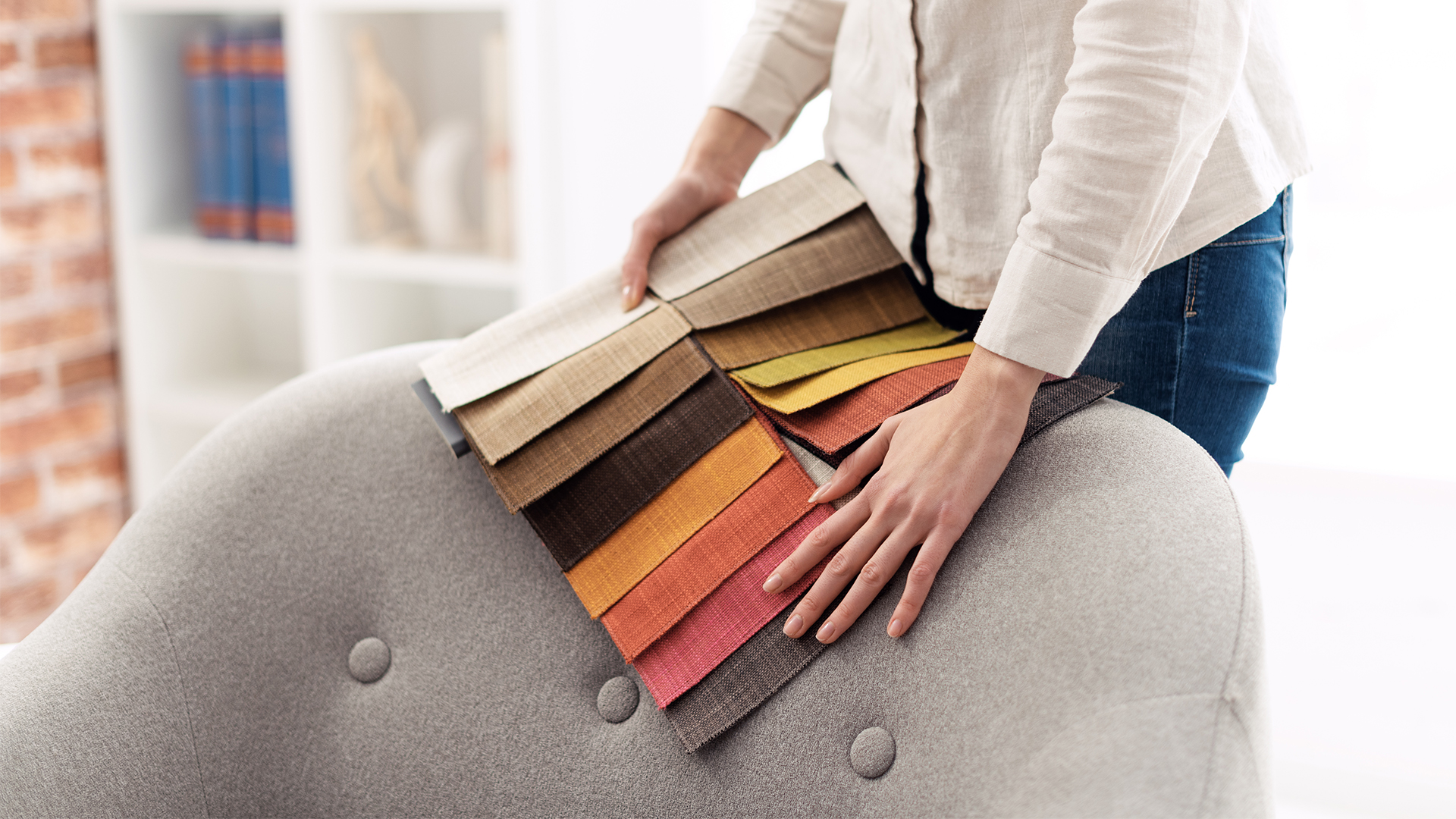





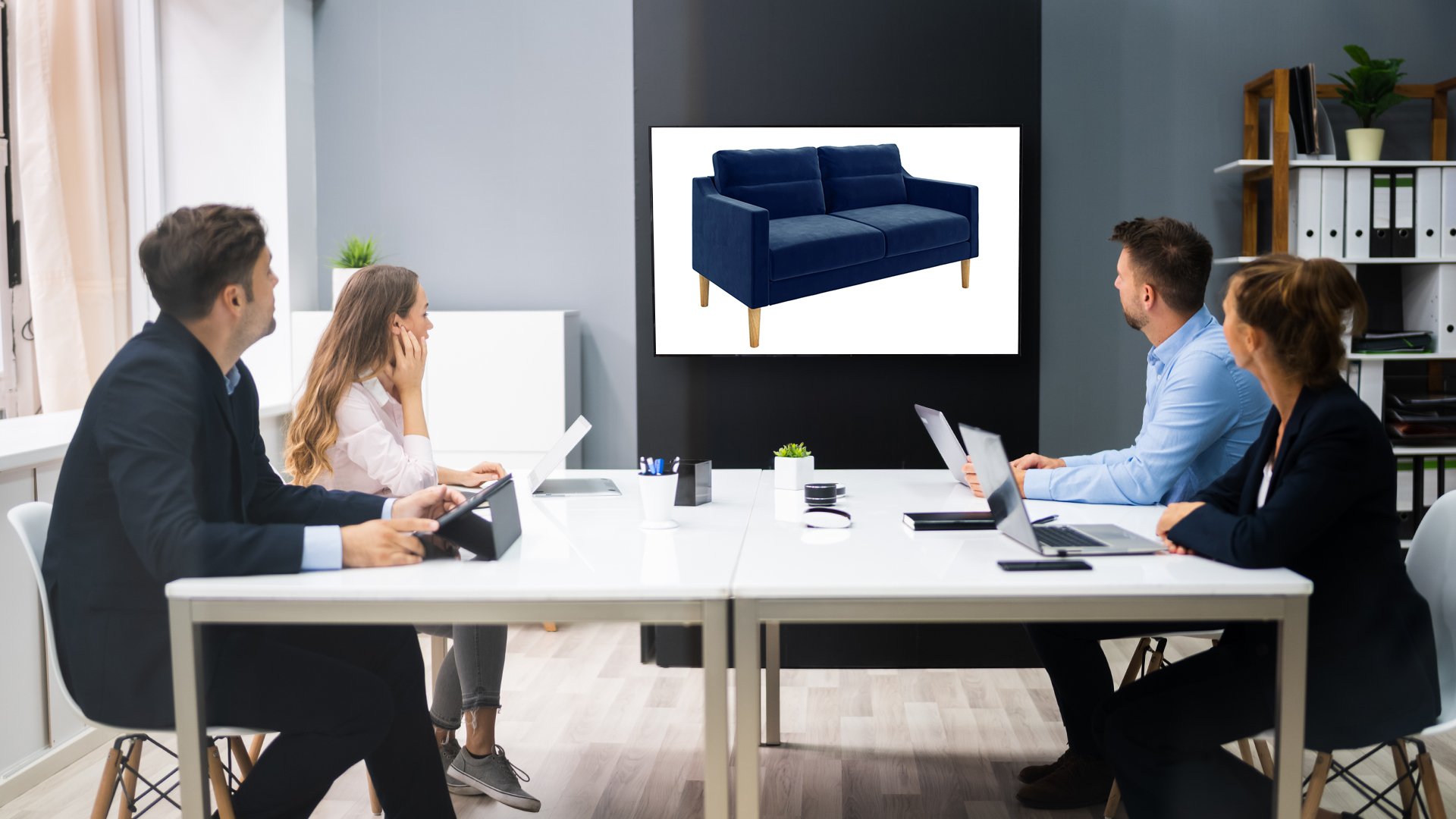
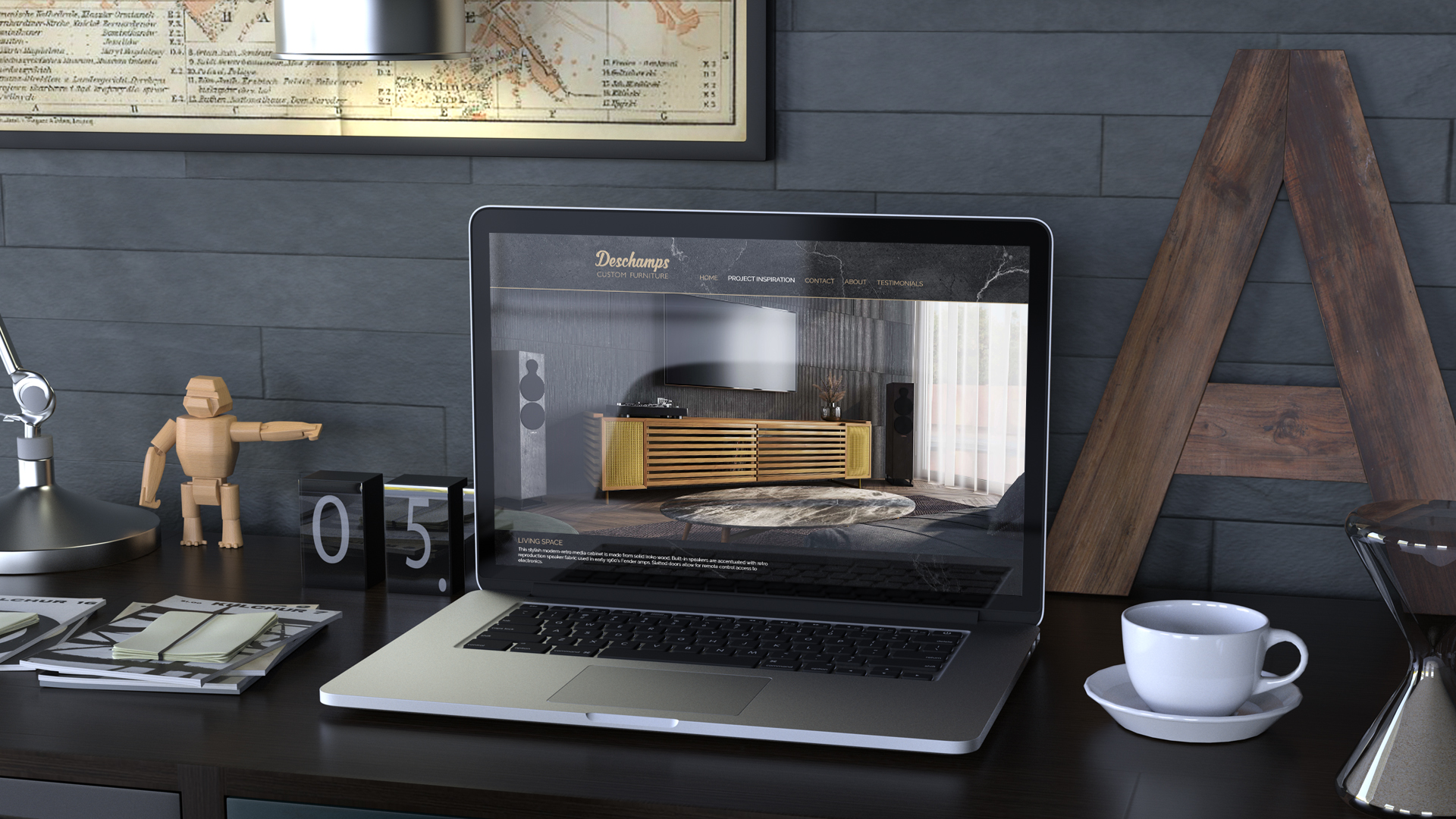




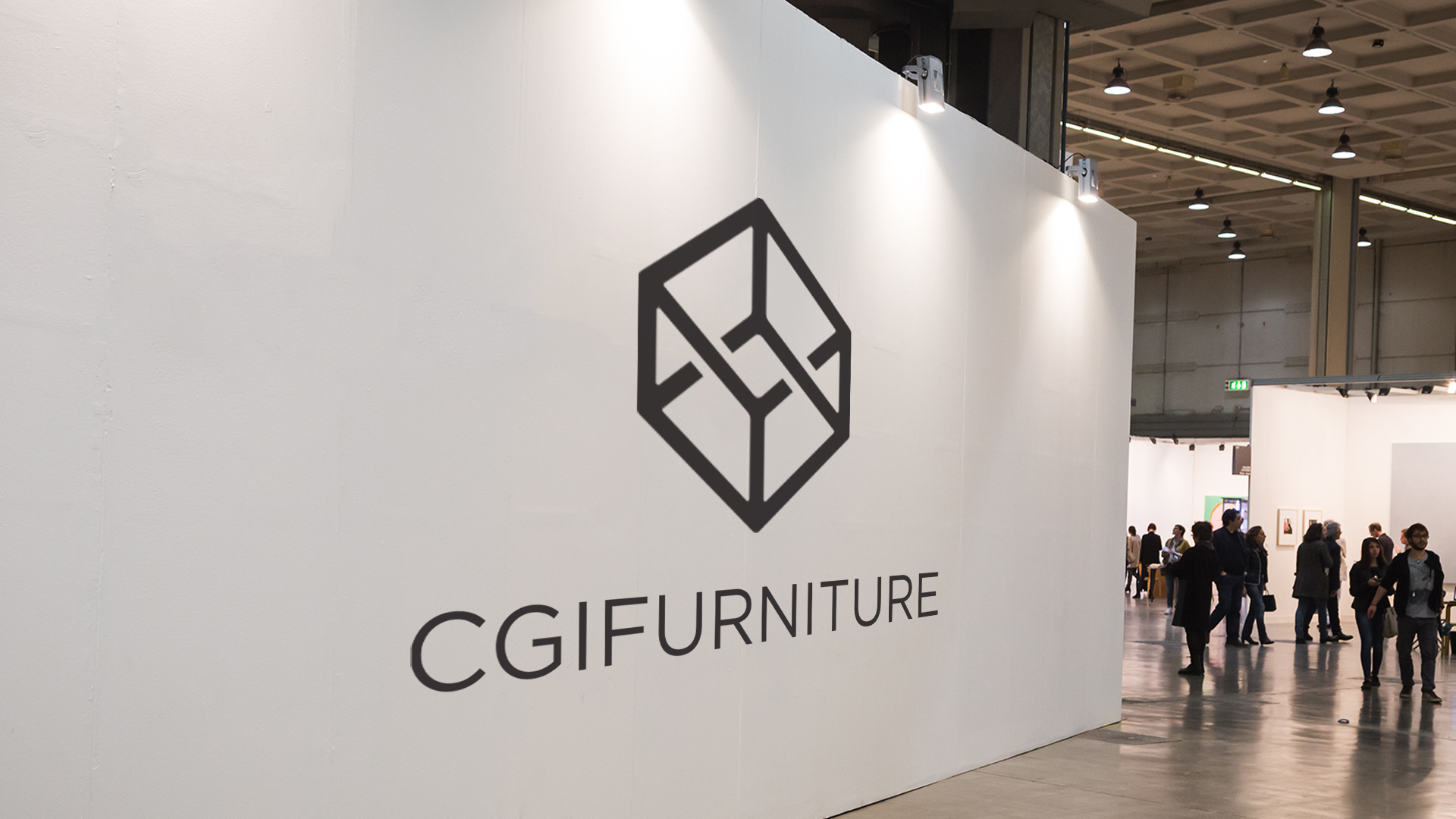


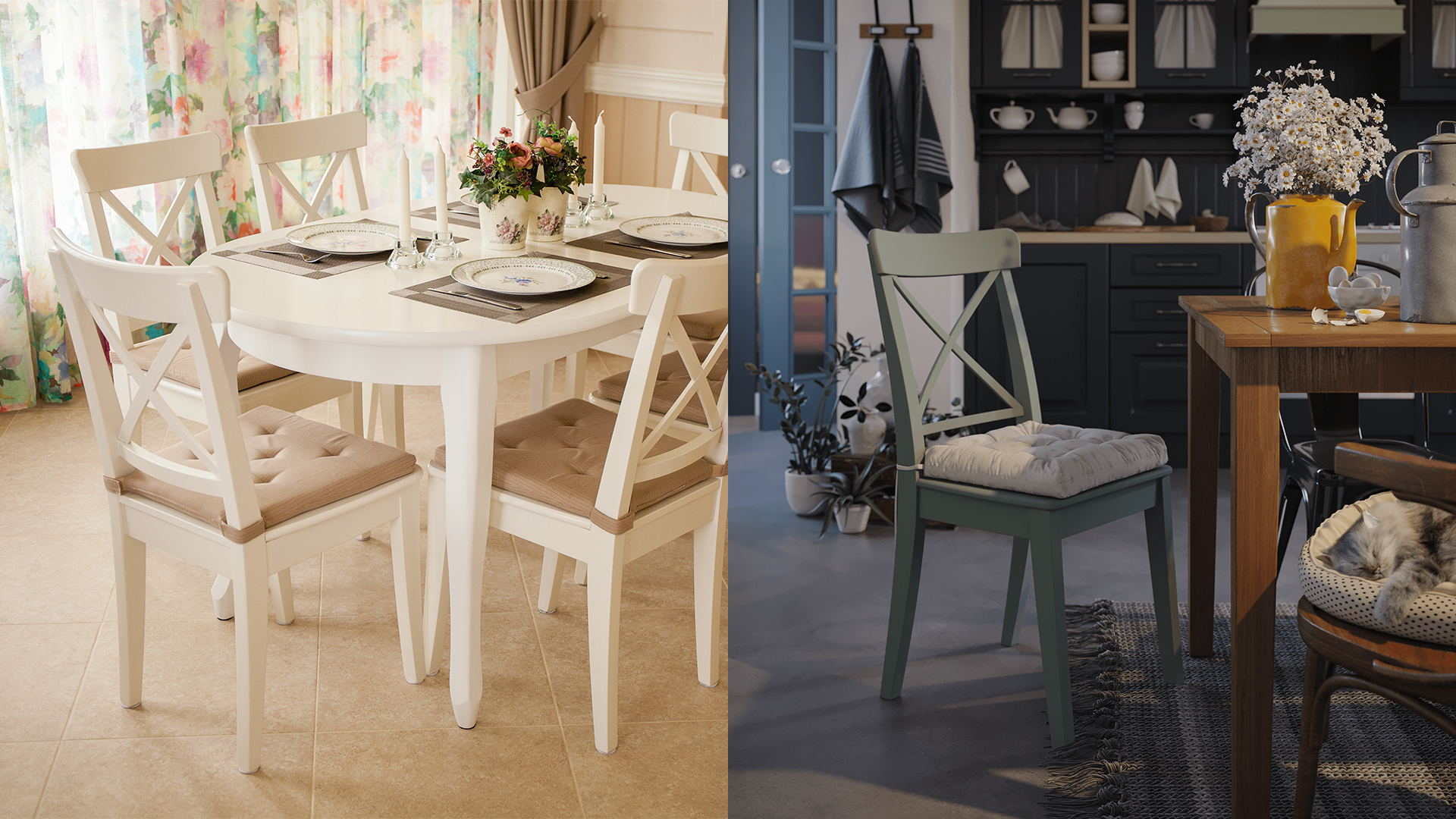
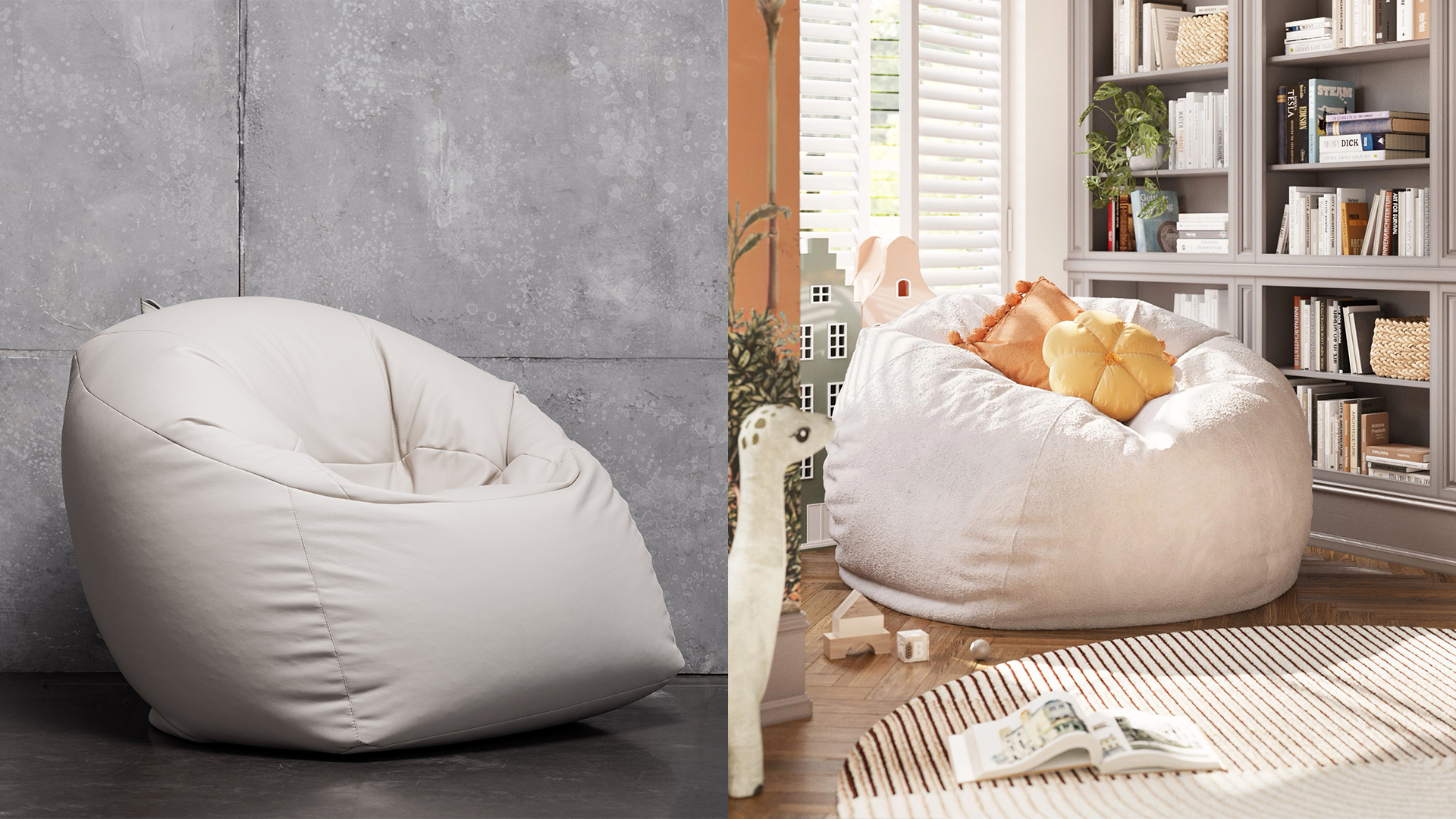
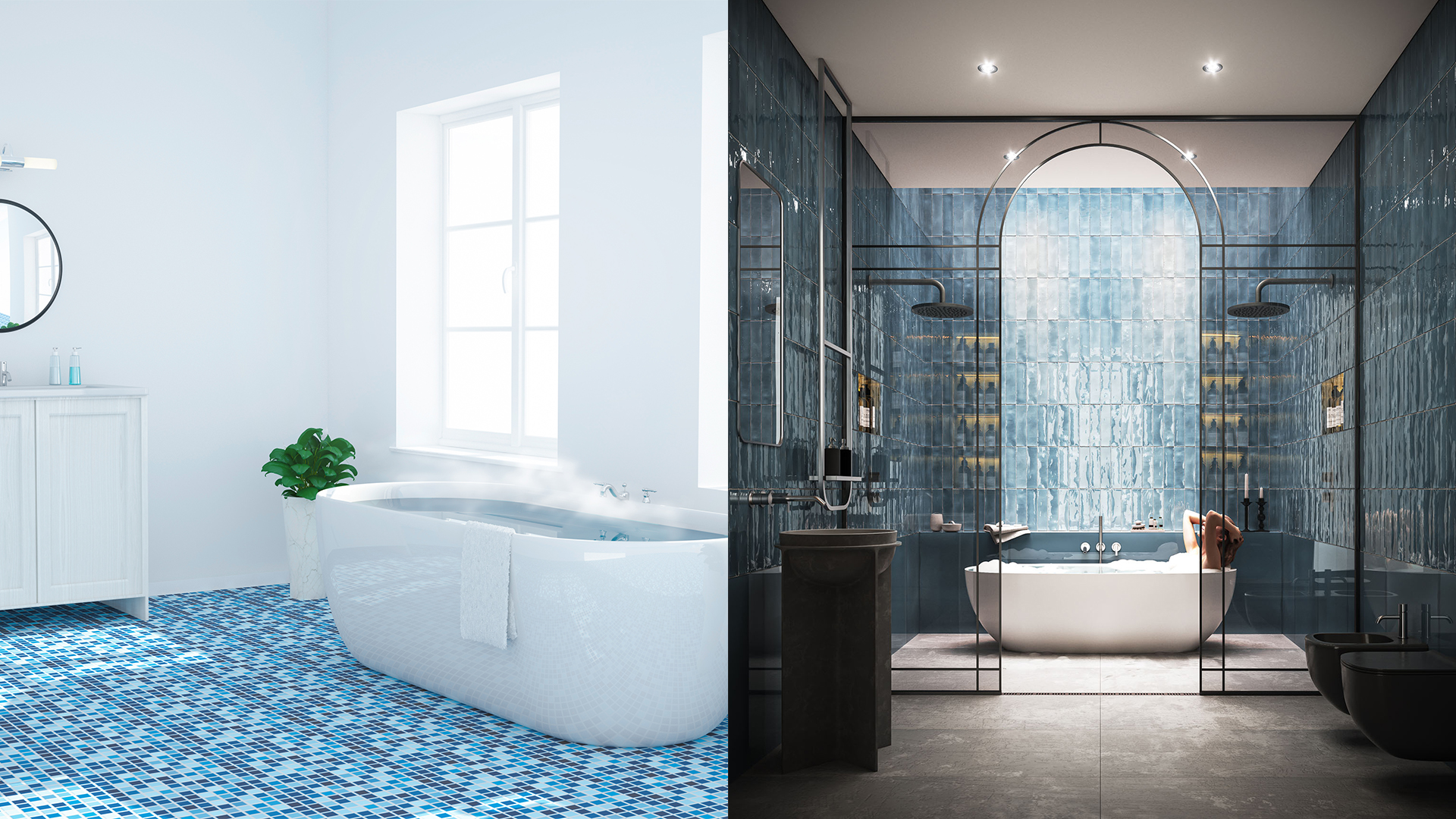

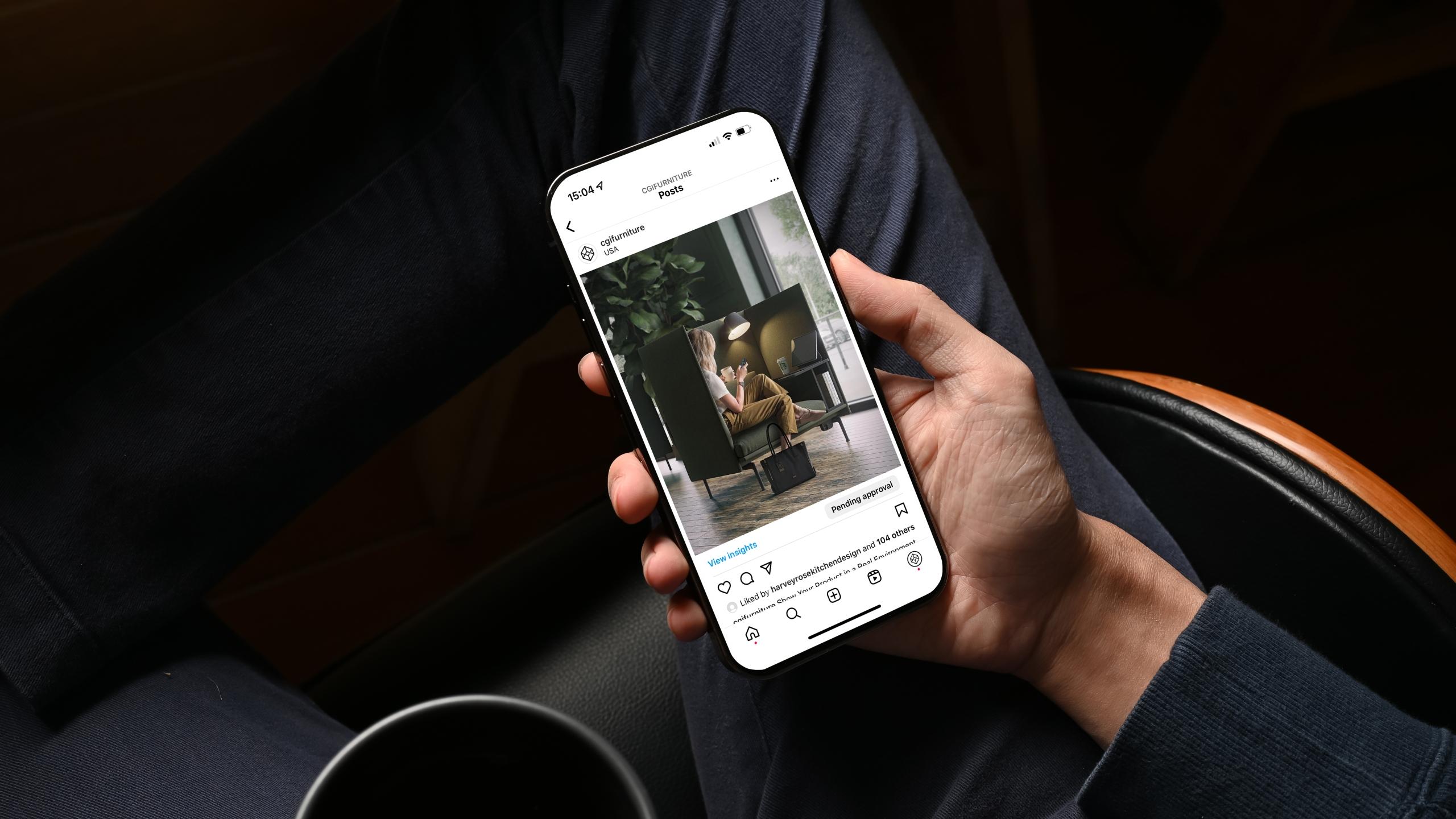












Leave a Reply
Want to join the discussion?Feel free to contribute!